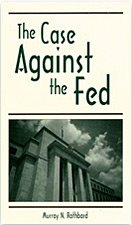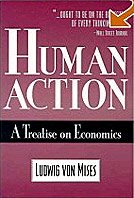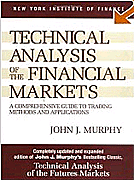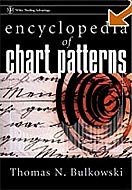The Paper Game
THE PAPER GAME
by James Turk
Founder, GoldMoney.com
March 5, 2007
The World Gold Council recently announced that the assets of StreetTracks Gold Shares (ticker symbol: GLD), the NYSE-listed exchange-traded fund it sponsors, exceeded $10 billion. That remarkable accomplishment makes its fund one of the fastest growing ETFs in history, which in itself is a significant achievement given the growing popularity of these investment vehicles.
In view of this milestone, I decided to take a fresh look at GLD. I’ve looked at GLD many times in the past, but always came up with the same conclusion.
Despite the way it was originally presented before its launch, GLD is not an alternative to owning physical gold. I have written about this point extensively, and here are the links if you would like to read my analyses.
-
Dec 8 2003 -- Securities & Exchange Commission vs. World Gold Council
-
Nov 22 2004 -- Where Is the ETFs Gold?
-
Dec 5 2004 -- More Questions About the ETFs Gold
-
Dec 12, 2004 -- An Open Letter to the Bullion Desk
-
Jun 10, 2006 -- An Exchange with World Gold Trust
Notwithstanding my previous writings, with an open mind I downloaded GLD’s latest prospectus and 10-Q to see if anything has changed. It hasn’t.
The same loose custodial controls remain in place, which is a critical shortcoming. GLD has not been structured to provide the assurances of integrity needed to establish that all of the gold that it supposedly owns is safe, secure and properly accounted for.
In the absence of these strong custodial controls, there is not any certainty that GLD has been increasing the physical demand for gold, which means that it has not achieved its original objective. It set out to create a vehicle that would provide the ownership of physical gold through a listed security that can be conveniently purchased and sold through stockbrokers. The idea was to increase the demand for physical gold through this new investment vehicle, thereby improving the gold price and as a consequence, increasing the revenue of the gold mining companies that fund the WGC.
GLD is of course a listed security, but there are many reasons to conclude that it is not an alternative to owning physical gold. The most important is that the gold supposedly held by GLD is not audited.
To explain this point, GLD’s financial statement is audited, but the gold is not. Its 10-Q reports the major asset of GLD to be an “Investment in Gold”. It does not say just “Gold”. This is an important distinction because these two labels are different for a reason. They describe fundamentally different assets. These two different labels make clear that “Investments in Gold” are one thing, but “Gold” is something else.
Investments in gold can be nearly anything gold related. For example, they can be gold certificates and other promises to pay gold. Importantly, they do not have to be physical gold.
Therefore, all GLD has to do to satisfy its auditor is to show them the bank statement (i.e., a piece of paper) that says gold is stored in any Subcustodian appointed by the Custodian. The auditors do not have to go to the vault of the Subcustodian to prove that the gold actually exists, is not encumbered in any way, is securely placed in allocated storage, and accurately records the ownership of the fund.
If GLD declared its asset to be “Gold”, the fund’s auditor would have to substantiate that the gold really exists, which GLD of course cannot do because of the inability to audit or even inspect gold stored in subcustodians and sub-subcustodians, which is a risk noted in the prospectus. This reality just re-confirms what I and others have concluded all along – GLD is just a paper scheme. It should not be considered as an alternative to physical gold ownership because it is not.
Here’s another example to demonstrate this point. The ETFs can be sold short. To sell short, the person going short needs to borrow shares, so he borrows the shares of the ETF. He then sells these borrowed shares to an unsuspecting buyer who thinks he is buying shares of an ETF backed by metal stored in a vault. But do you see what is happening here? The same metal backing the ETF (to the extent that the gold really exists in the first place, which is a separate issue) can be owned by two people to the extent of the ETFs short position. The following example will make this point clear.
Let's assume the ETF has 100 shares outstanding, with 100 ounces of gold backing those 100 shares. Let's further assume that 10 of those shares are owned by Bob (so he indirectly owns 10 ounces of gold). Assume that Alice wants to sell short 10 shares, so through her broker she borrows the 10 existing ETF shares owned by Bob that are registered in street name with his broker. Then Alice sells these 10 borrowed shares to Harry. So Bob and Harry now both own the same 10 ounces of gold.
This reality is just another reason to explain why the GLD is not what it is being portrayed to be. But the fault is not with the GLD prospectus; it makes clear that the buyer is simply tracking the gold price and not owning physical metal.
Before GLD launched, there was a lot of media attention about the gold-ETF being proposed. It was portrayed as gold ownership, 100% backed by physical metal in allocated storage. What emerged is actually quite different, but unfortunately, the media continues to portray the initial, pre-launch notion about the gold-ETF, which is what everybody wanted GLD to be.
My view is that GLD should be compared to futures contracts. Both futures contracts and GLD are trading vehicles.
No one who buys a futures contract thinks for a moment that they own gold. They understand that all they own is exposure to the future gold price (through a futures contract). The same logic should apply to GLD. When you own GLD, you don't own gold; you own exposure to the spot gold price (through a listed share).
Wall Street loves paper. No one can deny that. Just look at the mountain of derivatives that Wall Street has created in recent years. So it is not too surprising that Wall Street created a gold-ETF that is more paper than gold.
The information available at the StreetTracks Gold Shares website (http://streettracksgoldshares.com/) says that it has 156.1 million shares outstanding backed by 15.5 million ounces of gold (one share is slightly less than the 1/10th ounce it is supposed to represent because of the fund’s other assets). What that website does not tell you is that at the end of February, 2.9 million shares (according to www.shortsqueeze.com) have been sold short (up from 2.1 million the prior month-end). That’s nearly 300,000 ounces of gold double-owned by GLD shareholders, which has a value of $195 million.
How much higher would the gold price be if that $195 million had actually gone into the market to buy physical gold instead of someone’s short sale? Given that there is in any case no independent verification that the gold supposedly backing GLD actually exists or isn’t double-counted, one must reasonably ask how much demand for physical gold GLD has really created?
So that people don’t get the wrong idea, I think exchange traded funds are a great idea – but only when created properly. In other words, they need prudent safeguards. In this regard, GLD comes up short. The gold needs to be audited to prove that it exists and that it is unencumbered asset owned by the fund.
Here’s another piece of financial data from the 10-Q. In the three months ending December 31, 2006, GLD paid $8.3 million of fees, of which $2.9 went to its sponsor and $2.9 million went to its marketing agent. On an annualized basis, that works out to $23.2 million to just these two parties. Isn’t it about time that the WGC took some of that money and had GLD’s gold audited to prove that it exists? In the absence of that independent third party verification, one can only prudently assume that GLD is just part of Wall Street’s paper game. But maybe the WGC is just part of that game anyway.
Here’s how the World Gold Council describes itself in the press release announcing the $10 billion achievement by GLD: “World Gold Trust Services, LLC is a wholly owned subsidiary of the World Gold Council (WGC) which is a commercially-driven marketing organization that is funded by the world's leading gold mining companies. A global advocate for gold, the WGC aims to promote the demand for gold in all its forms through marketing activities in major international markets.”
Note that I have emphasized, “…the WGC aims to promote the demand for gold in all its forms”. I guess that means paper gold too through vehicles like GLD, but how does the promotion of paper gold help the WGC’s mining company members?
So view GLD like you would a futures contract. It’s a trading vehicle, and it seems that the World Gold Council has come around to my point of view. The website for StreetTracks Gold Shares starts out with a description of gold’s attributes and advantages and then goes on to say that GLD offers “investors an innovative, relatively cost efficient and secure way to access the gold market.” It does not say that when you own GLD you own physical metal.
In conclusion, it is clear that with GLD you own exposure to the gold price. You don't actually own physical gold for several reasons:
-
GLD does not prove the gold exists with independent third party audits.
-
The same gold in GLD may be owned by two people because of short selling.
-
Even if GLD were in reality backed by gold, there are too many parties between you and the gold to claim that you really own it. So while you may have “access” to the gold price through GLD, you do not have access to any physical metal that it may be holding.
Physical gold is the bedrock asset in your portfolio. Do not take risks with it. Own it, and keep it safe, just in case there comes a day when you may need it.
Labels: gold, James Turk, market manipulation, markets















![[Most Recent Quotes from www.kitco.com] [Most Recent Quotes from www.kitco.com]](http://www.kitco.com/images/live/t24_au_en_usoz_6.gif)
![[Most Recent Quotes from www.kitco.com] [Most Recent Quotes from www.kitco.com]](http://www.kitco.com/images/live/au_go_0030_ny.gif)
![[Most Recent Quotes from www.kitco.com] [Most Recent Quotes from www.kitco.com]](http://www.kitco.com/images/live/au_go_0365_ny.gif)
![[Most Recent Quotes from www.kitco.com] [Most Recent Quotes from www.kitco.com]](http://kitconet.com/charts/metals/silver/t24_ag_en_usoz_4.gif)

















0 ΣΧΟΛΙΑ (COMMENTS):
Post a Comment
<< Home